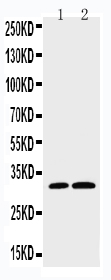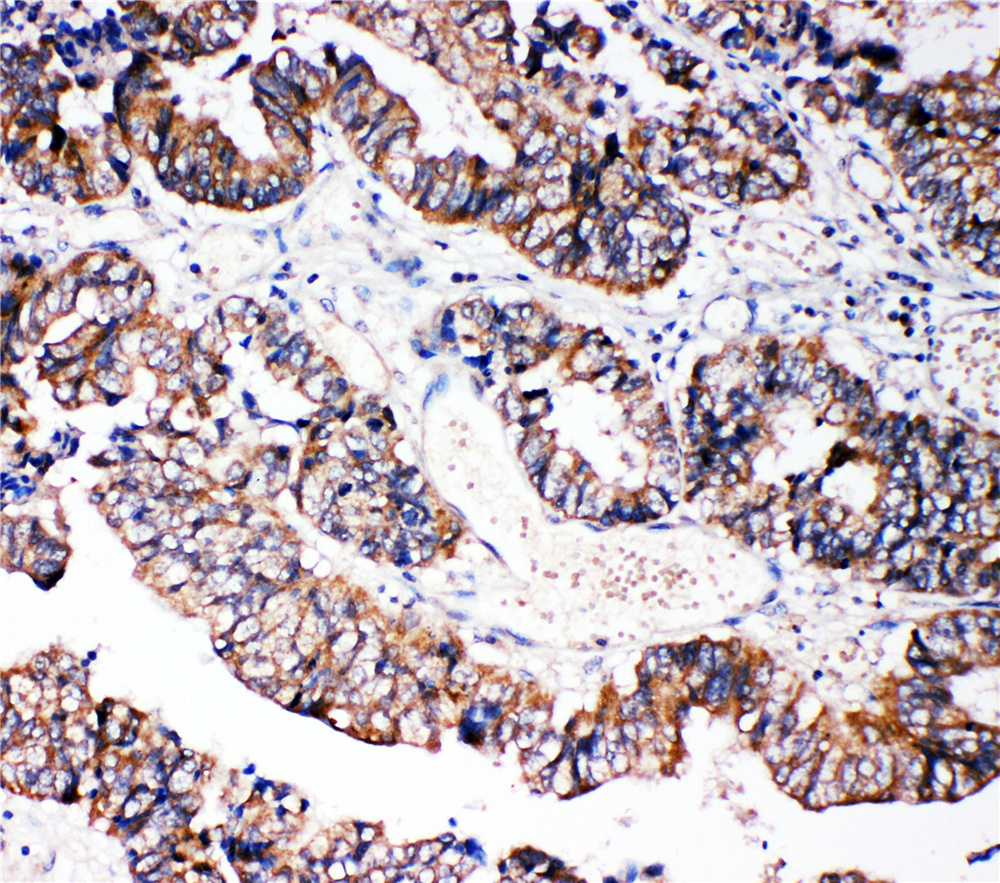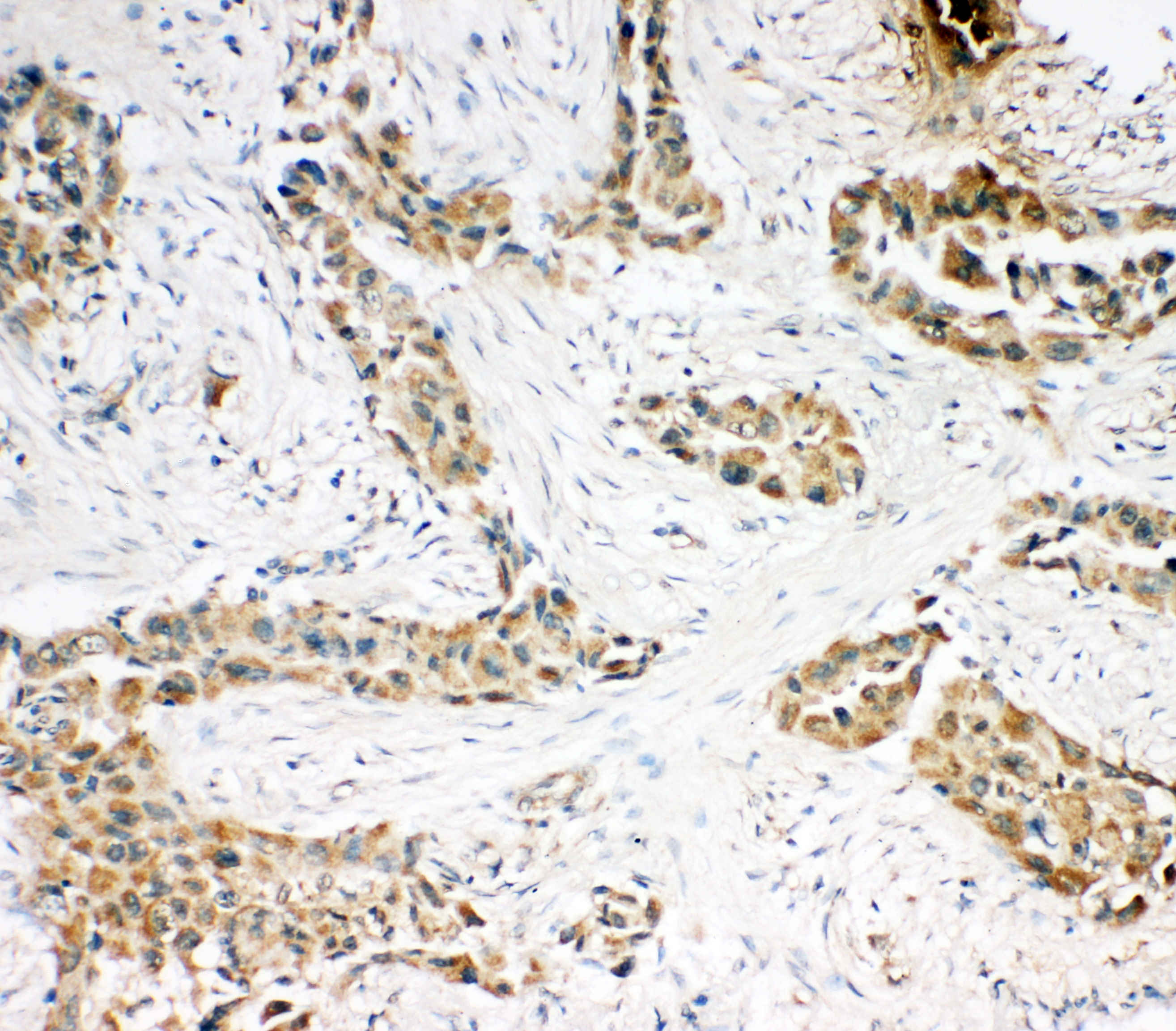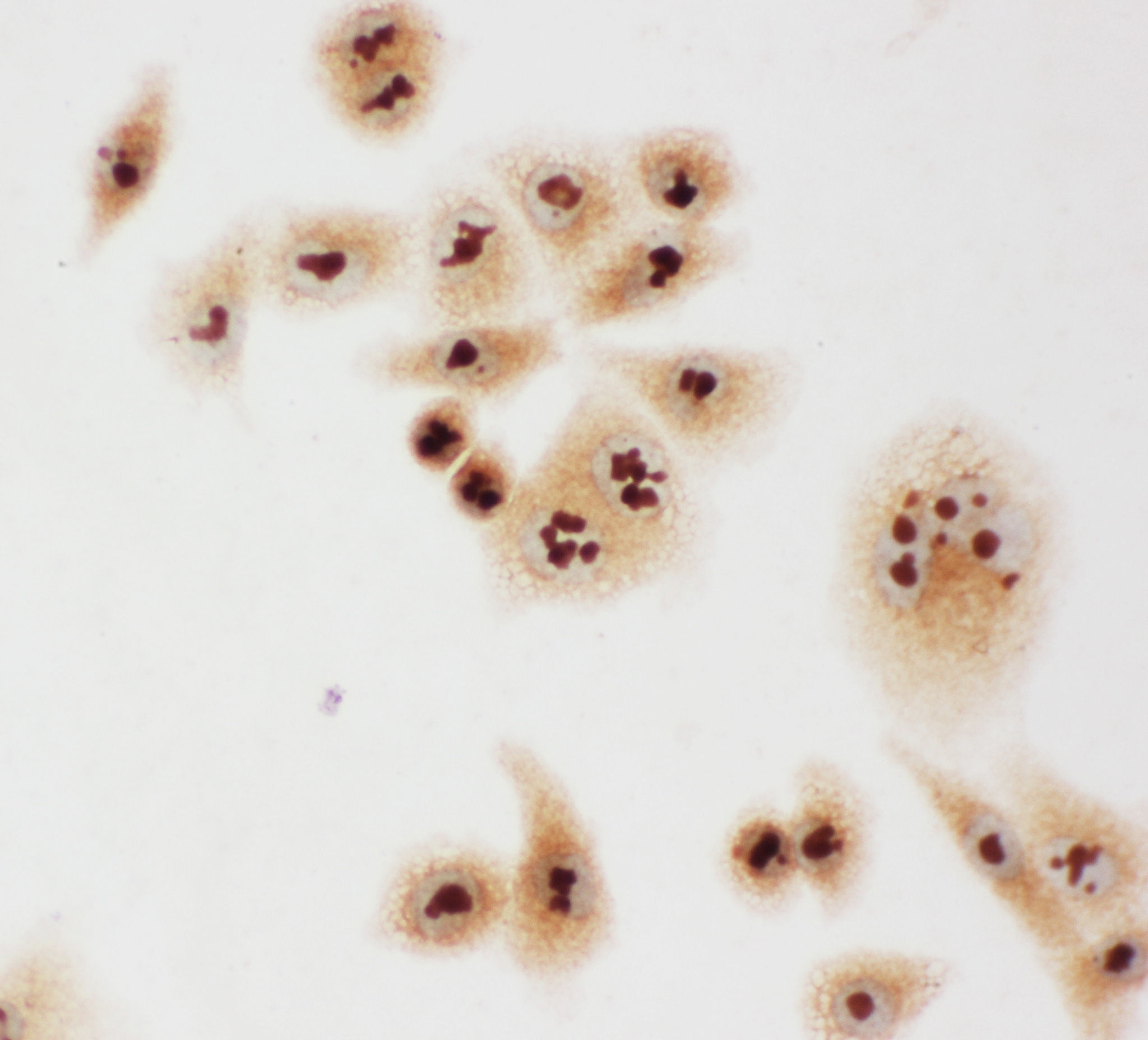| Western blot (WB): | 1:500-2000 |
| Immunohistochemistry (IHC): | 1:50-400 |
| Immunocytochemistry/Immunofluorescence (ICC/IF): | 1:50-400 |
| (Boiling the paraffin sections in 10mM citrate buffer,pH6.0,or PH8.0 EDTA repair liquid for 20 mins is required for the staining of formalin/paraffin sections.) Optimal working dilutions must be determined by end user. | |

Figure 1. Western blot analysis of anti- CASP3(P12) antibody (BA3592). The sample well of each lane was loaded with 50ug of sample under reducing conditions.
Lane 1: Hela whole cell lysates,
Lane 2: SMMC whole cell lysates.
Use rabbit anti- CASP3(P12) 1:1000, probed with a goat anti-rabbit IgG-HRP secondary antibody. The signal is developed using an Enhanced Chemiluminescent detection (ECL) kit (Catalog # EK1002). A specific band was detected for CASP3(P12) at approximately 35KD. The expected band size for CASP3(P12) is at 32KD.

Figure 2. IHC analysis using anti- CASP3(P12) antibody (BA3592). detected in paraffin-embedded section of human Intestinal cancer tissue. Biotinylated goat anti-rabbit IgG was used as secondary antibody. The tissue section was developed using Strepavidin-Biotin-Complex (SABC) (Catalog # SA1022) with DAB as the chromogen.

Figure 3. IHC analysis using anti- CASP3(P12) antibody (BA3592). detected in paraffin-embedded section of human lung cancer tissue. Biotinylated goat anti-rabbit IgG was used as secondary antibody. The tissue section was developed using Strepavidin-Biotin-Complex (SABC) (Catalog # SA1022) with DAB as the chromogen.

Figure 4. ICC analysis of Caspase-3(P10) using anti-Caspase-3(P10) antibody (BA3592). Caspase-3(P10) was detected in immunocytochemical section of A549 cell. Enzyme antigen retrieval was performed using IHC enzyme antigen retrieval reagent (AR0022) for 15 mins. The cells were blocked with 10% goat serum. And then incubated with 1μg/ml rabbit anti-Caspase-3(P10) Antibody (BA3592) overnight at 4°C. Biotinylated goat anti-rabbit IgG was used as secondary antibody and incubated for 30 minutes at 37°C. The section was developed using Strepavidin-Biotin-Complex (SABC)(Catalog # SA1022) with DAB as the chromogen.

Figure 1. Western blot analysis of anti- CASP3(P12) antibody (BA3592). The sample well of each lane was loaded with 50ug of sample under reducing conditions.
Lane 1: Hela whole cell lysates,
Lane 2: SMMC whole cell lysates.
Use rabbit anti- CASP3(P12) 1:1000, probed with a goat anti-rabbit IgG-HRP secondary antibody. The signal is developed using an Enhanced Chemiluminescent detection (ECL) kit (Catalog # EK1002). A specific band was detected for CASP3(P12) at approximately 35KD. The expected band size for CASP3(P12) is at 32KD.

Figure 2. IHC analysis using anti- CASP3(P12) antibody (BA3592). detected in paraffin-embedded section of human Intestinal cancer tissue. Biotinylated goat anti-rabbit IgG was used as secondary antibody. The tissue section was developed using Strepavidin-Biotin-Complex (SABC) (Catalog # SA1022) with DAB as the chromogen.

Figure 3. IHC analysis using anti- CASP3(P12) antibody (BA3592). detected in paraffin-embedded section of human lung cancer tissue. Biotinylated goat anti-rabbit IgG was used as secondary antibody. The tissue section was developed using Strepavidin-Biotin-Complex (SABC) (Catalog # SA1022) with DAB as the chromogen.

Figure 4. ICC analysis of Caspase-3(P10) using anti-Caspase-3(P10) antibody (BA3592). Caspase-3(P10) was detected in immunocytochemical section of A549 cell. Enzyme antigen retrieval was performed using IHC enzyme antigen retrieval reagent (AR0022) for 15 mins. The cells were blocked with 10% goat serum. And then incubated with 1μg/ml rabbit anti-Caspase-3(P10) Antibody (BA3592) overnight at 4°C. Biotinylated goat anti-rabbit IgG was used as secondary antibody and incubated for 30 minutes at 37°C. The section was developed using Strepavidin-Biotin-Complex (SABC)(Catalog # SA1022) with DAB as the chromogen.



